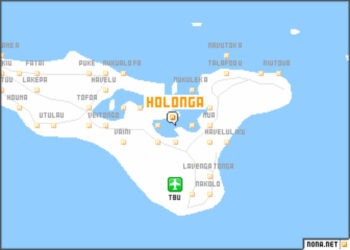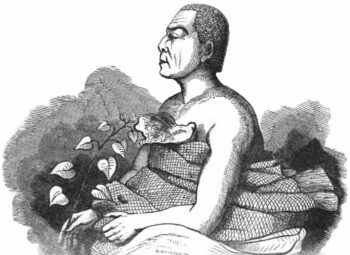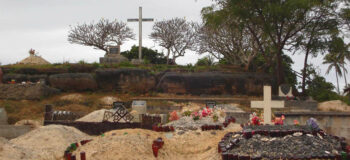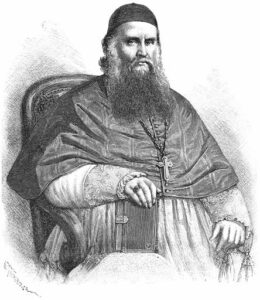The Beginnings of the Catholic Church in Tonga
Based on the writings of Fr Joseph Deihl SM, adapted by Fr Kevin Head SM
Part 3
Fr Deihl wrote, “Persecution and the dispersal of the persecuted have often proven to be, in the designs of God, the good wind that carries the seeds of the gospel far afield; the story of the Catholic mission in the Kingdom of Tonga will afford no exception.”
The early Catholic missionaries in Tonga ministered mostly in villages where paganism remained, as they were, according to Fr Deihl, “confronted by an aggressive Methodism that chafed under any check to its complete conquest of the Tongan Isles”.
Tonga had endured civil war from 1837-1840 which was a ‘missionary’ war, “a crusade in which the club and the Bible were linked against the powers of darkness.”1
Fr Deihl continued, “Methodism had awakened in its adherents an hysterical enthusiasm and ‘the new converts, with the doctrine of universal love ringing in their ears, were now to learn something of Christian hate, and to do them justice, they made very apt pupils.’ 2 The despised heathen who yielded not to the sword was now surrendering to a more hated poverty-stricken, papist priest. This same civil war came under the immediate observation of Commander Wilkes, and in his Narrative of the United states Exploring Expedition 1852, he tells us that this war was ‘in great measure a religious contest, growing out of the zeal the missionaries have to propagate the gospel and to convert the heathen. With this is combined the desire of King George or Taufa’ahau, who is already master of  Ha’apai and Vava’u, to possess himself of all the islands of the group.’ 3 When, therefore, in 1845, Taufa’ahau (George Tupou) achieved his purpose and was elected to the office of Tui-Kana-Kupolu, or temporal sovereign of all Tonga, Father Chevron had every reason to fear the worst.”
Ha’apai and Vava’u, to possess himself of all the islands of the group.’ 3 When, therefore, in 1845, Taufa’ahau (George Tupou) achieved his purpose and was elected to the office of Tui-Kana-Kupolu, or temporal sovereign of all Tonga, Father Chevron had every reason to fear the worst.”
For a few months, the king was friendly towards the Catholics, but soon there was a rumour circulating that the Catholics had attempted to assassinate the king.
“The situation became very tense: the fathers on their rounds, were met with hostile glances and there were instances of confiscation of property and exile of the Catholic owners.” And then, during the night of 19 October 1847, the church in Holonga was burnt down, the fire having been purposely lit. Fr Chevron had a soft spot for Holonga, for it had been there that he had baptised twelve catechumens and given their first Holy Communion to twenty-five people in September 1845. As well, Holonga provided a gateway to Mua, the sacred capital of Tonga where the Tui-tonga, Lau-fili-tonga, lived, and to the villages in the east of the island. However, King George Tupou’s rise to power along with his espousal of Methodism had weakened the influence of the Tui-tonga, “once the representative of the immortals, the spiritual sovereign before whom all chiefs bowed in homage.”
First Midnight Mass in Tonga

King George, of the Friendly Islands (1852)
Despite all the problems, Fr Chevron had always hoped that the Tui-tonga would become Catholic. On the feast of Our Lady Help of Christians in 1847, the Tui-tonga allowed a small house to be built at Mua, and it was there, on 30 May, that the first Mass was offered in the village. When the church in Holonga had been burnt down, with the rise to power of George Tupou and the ascendancy of Methodism, the Tui-tonga (Spirtual Leader) indicated that a church might be built in his Mua. The Tonga Catholics, led by Moe-aki from Pea, needed no second invitation, and Christmas 1847 saw the first Midnight Mass in Tonga in Mua, attended by Catholics, Protestants and pagans alike, “to assist at this striking and solemn service.”
Grace triumphs
Eventually, as a result of Fr Chevron’s persistence and God’s grace, the Tui-tonga one day expressed his desire to join the church. “The very next Sunday, with more than twenty of his followers, he knelt for the first time in the little church at Mua. It was a day of joy and triumph for the Catholics of Tonga and well did they need the sustaining force that this action of the Tui-tonga inspired.”

The large cross marks the grave of Laufilitonga, - whom Fr Chevron baptised.
The solemn Baptism of the Tui-tonga

Bishop Bataillon
“The solemn baptism of the Tui-tonga, followed by his first Holy Communion, took place in October 1851 on the feast of the Most Holy Rosary, at the hands of Bishop Bataillon, at that time on a visit to Tonga. Through those years of waiting, apart from one lapse on the occasion of certain pagan festivities which he solemnly opened with the sign of the cross, he remained steadfast to his promise, resisting alike the flattery of the ministers and the threats of George Tupou. In later years 4, deprived of his title and prestige, this last representative of the sacred line of Tongan kings found his solace on earth at the foot of the Tabernacle, at daily mass, and in Holy Communion, and in heaven, may we hope, an everlasting crown.”
Source: MM, March 1934
[1] Basil Thompson in “The Diversions of a Prime Minister,” 1894.
[2] ibid
[3] ibid. p 6]
[4] King George took the title of Tui-Tonga for himself
 Entries(RSS)
Entries(RSS)